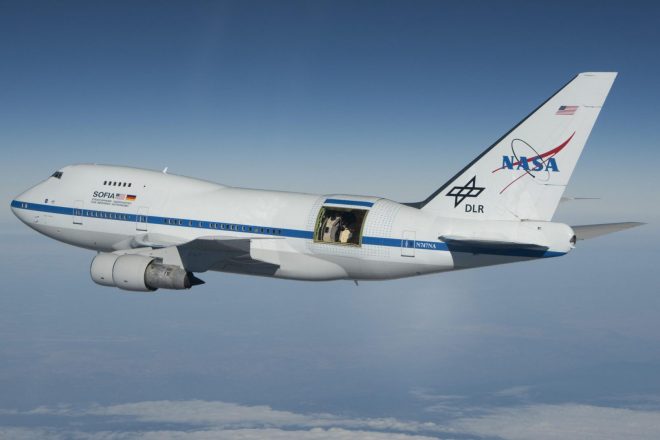Một kính viễn vọng không trung của NASA đang thực hiện chuyến thăm cuối cùng của mình đến Christchurch.
SOFIA (Đài quan sát tầng bình lưu cho Thiên văn học hồng ngoại) là một máy bay 747 đã được sửa đổi để phù hợp với kính thiên văn 2,7 mét. Nó giúp các nhà khoa học thu thập dữ liệu có thể bị bỏ qua bởi một kính thiên văn trên mặt đất.
Trong 10 năm qua, chiếc máy bay đã thực hiện 7 chuyến đi đến Christchurch, tuy nhiên, hiện nay nó đang được ngừng hoạt động để nhường chỗ cho công nghệ mới.
Nhà khoa học NASA Naseem Rangwala cho biết Christchurch đã trở thành một “ngôi nhà xa nhà” cho các máy bay có trụ sở tại California.
“Christchurch đã đóng một vai trò lớn trong thành công khoa học của SOFIA, và điều đó sẽ vẫn mãi mãi. Nhóm nghiên cứu của chúng tôi đã hình thành tình bạn và mối quan hệ rất sâu sắc với người dân Christchurch”, cô nói.
Máy bay bay trên 39.000 feet, cho phép kính thiên văn tránh được 99% khí quyển chặn hồng ngoại của Trái Đất. Nhiệm vụ cuối cùng tập trung vào việc lập bản đồ từ trường trong Ngân Hà – một thứ được thực hiện bởi các điều kiện khí hậu ở New Zealand.
SOFIA sẽ quay trở lại California vào tháng tới, nơi nó sẽ tiếp tục hoạt động cho đến ngày 1 tháng 10.
Ảnh tín dụng: NASA/Jim Ross – http://www.nasa.gov/images/content/471422main_ED10-0182-01_full%20_full.jpg





























































